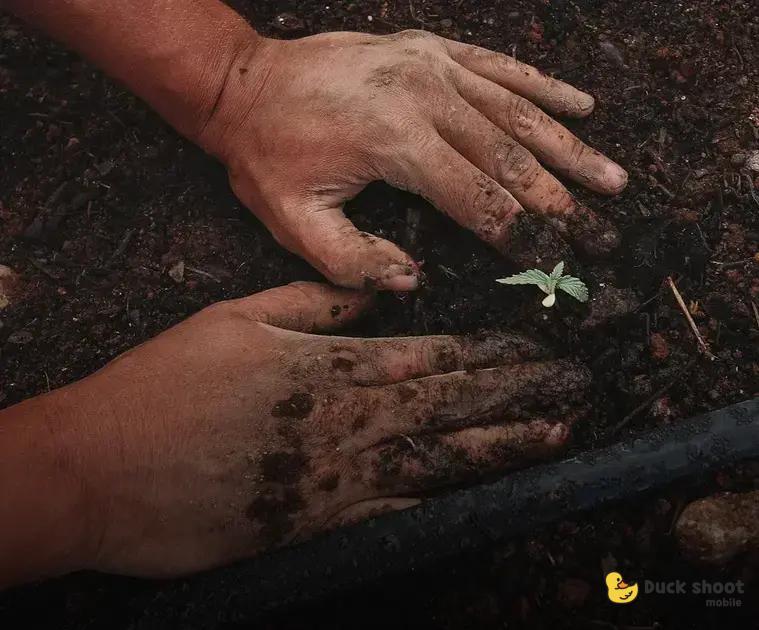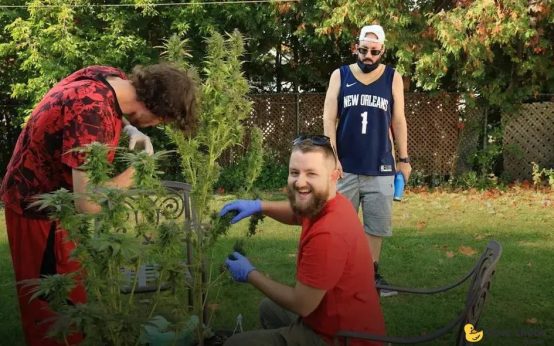Plants, like humans, can get sick. Recognizing early signs and symptoms of common plant diseases is crucial for any gardener. By identifying issues early, you can implement effective treatment methods and preventive measures, ensuring your plants remain healthy and vibrant. In this guide, we’ll explore how to spot these diseases and what steps you can take to treat them, keeping your garden flourishing all season long.
Recognize Early Signs of Plant Diseases
Plants can show subtle signs when they face disease threats. Pay attention to changes in leaf color. Yellowing can imply nutrient deficiencies, while brown spots could be due to fungal infections. Observe any leaf distortion as it often indicates a virus or pest problems. Be vigilant for wilted or droopy leaves, potentially a sign of root rot or water issues.
Inspect stems and branches for lesions or cankers, suggesting bacterial or fungal invasions. Look under leaves for pests or sticky residues from aphids or another infestation.
Check the soil
for excess moisture or fungal growth, and consider any unusual odors as a warning sign.
Early detection is vital. Familiarize yourself with your plant’s normal state to spot issues swiftly. By catching these early signals, you improve your chances of effective treatment, helping to sustain healthy, thriving plants.
Effective Treatment Methods for Plant Issues

Addressing plant diseases promptly is crucial to maintaining plant health. Once you identify the problem, choosing the right treatment method is essential. Most plant issues can be treated with a combination of biological and chemical solutions.
For fungal infections, a typical approach involves applying a fungicide. These are either systemic, penetrating plant tissues, or contact-based, staying on the plant’s surface. Common active substances include copper-based solutions or sulfur.
When dealing with bacterial diseases, sanitation and pruning are effective. Remove infected plant parts to prevent spread, and disinfect tools with a bleach solution or alcohol. Copper sprays can also help manage bacterial populations.
Pests causing indirect plant diseases can be managed with insecticidal soaps, neem oil, or biological controls like ladybugs for aphid infestations. Avoid overuse of chemical pesticides to prevent resistance buildup.
Natural remedies are also worth considering. Neem oil can act as both a fungicide and insecticide, while chamomile tea can help with fungal issues when applied directly to the plant.
Regular monitoring and a holistic approach to plant health, including proper watering, fertilization, and spacing, can reduce the risk of recurring issues.
Preventive Measures to Avoid Plant Diseases
Proper Plant Spacing is Essential
Spacing plants adequately helps improve airflow, reducing humidity levels that encourage disease development. Ensure that each plant has enough room to grow and breathe. Air circulation plays a crucial role in preventing fungal and bacterial diseases.
Regular Inspections and Monitoring
Frequently check your plants for any irregularities such as spots, wilting, or unusual growth. Catching problems early can make them easier to manage and prevent spreading. Consider maintaining a plant health diary to track any changes over time.
Soil Management Strategies
Healthy soil is the foundation for robust plants. Rotate crops to prevent disease build-up, and make use of compost to enrich soil fertility. Avoid overwatering and ensure the soil drains well to prevent root rot and fungal diseases.
Use of Resistant Varieties
Opt for plant varieties that are bred to be resistant to common diseases in your region. Check with local nurseries or agricultural extensions for recommended varieties.
Sanitation Practices
Maintain garden cleanliness by removing dead leaves and fallen fruits from the ground, which can harbor disease. Sterilize tools before and after use to prevent the spread of pathogens.
Appropriate Fertilization
Provide the right nutrients in the right amount. Over-fertilization can weaken plants, making them susceptible to disease. Follow recommended guidelines for fertilizing your specific plant species.
Proper Watering Techniques
Water plants at the soil level rather than from above to keep foliage dry. Drip irrigation systems are an effective way to ensure plants receive adequate water without promoting fungal growth.
Robust Mulching Practices:
Mulching can reduce soil splashing and suppress weeds, which might carry diseases. Use organic mulch to improve soil quality while protecting your plants.
Common Plant Disease Symptoms You Should Know

Spotting Yellowing Leaves
Yellowing leaves are a common indication that your plant might be under stress or suffering from a disease. This symptom can result from nutritional deficiencies, poor watering techniques, or even viral infections. It’s crucial to check the type of yellowing and its spread across the plant.
Understanding Leaf Spots
Leaf spots, often circular and discolored, can be a sign of fungal or bacterial infections. They appear in various colors like brown or black and can lead to leaf drop. Regular inspection and removal of affected leaves can help mitigate the spread.
Root Rot and Its Visible Symptoms
Plants suffering from root rot exhibit stunted growth, wilting, and discolored stems. Overwatering is a usual culprit here. Ensuring proper drainage can prevent this condition from worsening.
Wilting Even with Adequate Water
A plant wilting despite regular watering might indicate a root issue or a vascular disease. It’s essential to examine the root system for any signs of decay or pests.
Abnormal Growth or Deformities
Look out for twisted leaves or stems and any unusual growth patterns. These can be signs of viral infections or environmental stressors. Keeping an eye on environmental conditions like light, temperature, and humidity can help identify the root cause.
Tips for Maintaining Plant Health Year-Round
-
Watering Properly:
To maintain plant health, ensure you are watering according to each plant’s specific needs. Overwatering can lead to root rot, whereas under-watering may cause wilting. Consider using a moisture meter to monitor soil moisture levels.
-
Soil Quality:
Keep your plant’s soil rich in nutrients. Use well-draining soil and consider adding organic matter like compost to enhance soil quality.
-
Regular Fertilization:
Depending on the plant species, employ a balanced fertilizer every few weeks during the growing season. This provides essential nutrients for robust growth.
-
Proper Lighting:
Most plants require the appropriate amount of light. Assess whether your plants prefer full sun, partial shade, or indoor light conditions.
- Humidity Levels: Many houseplants thrive in humid conditions. You can boost indoor humidity using a humidifier or by placing a tray of water near plants.
- Pest Control: Routine inspection of your plants for pests like aphids or mites is vital. Use natural pesticides or insecticidal soap to control these unwanted guests.
-
Pruning Dead Leaves:
Trim back dead or diseased leaves to enhance plant health and encourage new growth. This practice also helps to prevent the spread of disease.
- Rotate Plants: If indoors, rotate your plants regularly to prevent them from growing unevenly and to ensure they receive even light exposure.
-
Temperature Regulation:
Protect plants from extreme temperature changes. Most houseplants do well in temperatures between 18 to 24°C (64 to 75°F).
- Check for Diseases: Frequently inspect plants for diseases, which can spread quickly if not treated. Look for discoloration, spots, or mold growth. Using fungicides can help manage common issues.


 Hosting a Garden Party: Nature-Inspired Décor Tips
Hosting a Garden Party: Nature-Inspired Décor Tips  Outdoor Lighting Ideas to Highlight Your Garden Neatly
Outdoor Lighting Ideas to Highlight Your Garden Neatly  Incorporating Water Features into Your Garden Like a Pro
Incorporating Water Features into Your Garden Like a Pro